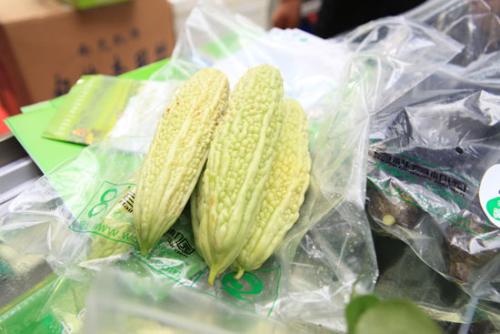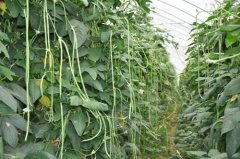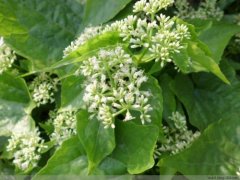Organic agricultural products: description of dithiocarbamate agents detected in organic agricultural products
The retest results of 18 samples of dithiocarbamate in organic agricultural products show that you want to know? Let's take a look at it.

In May 93, 18 samples of "dithiocarbamate" were detected in organic agricultural products. After the agricultural drug toxicology test of the Committee of Agriculture of the Executive Yuan, high performance liquid chromatography (HPLC) analysis was used to determine the residue of non-"dithiocarbamate".
2. From now on, the detection method of "dithiocarbamate" for cruciferous crops in organic agricultural products is still carried out by colorimetry and headspace sampling gas chromatography. The test results below 1ppm are temporarily regarded as undetected, and those higher than 1ppm are compared with the washed samples of the original samples. if there is no difference, they are also regarded as undetected and confirmed by high performance liquid chromatography (HPLC) if necessary.
Third, the existence of "glucosinolates" in some plants will cause interference in the test of "dithiocarbamate":

There are many kinds of glucosinolates (glucosinolates, or thioglucoside), and they have a common structure. That is, it has side chain R and sulfur atoms to connect D-glucose and thiohydroxamate-O-sulphate. Early sucrose? It is often named by a common name, but it was not systematically named until 1961, that is, the structure of the side chain R was added before the glucosinolates.
Due to the difference of side chain R, it is known that there are more than one hundred kinds of glucosinolates, which are commonly found in some plants, and most of them are Brassicaceae vegetables, such as heading Chinese cabbage, non-heading Chinese cabbage (rape, Qingjiang cabbage, kale, Chinese cabbage), cauliflower, cabbage, kale (turnip), turnip, mustard and so on. Carbon disulfide (CS2) is often released from cruciferous vegetables when acid is added, so it often interferes with the detection of dithiocarbamate fungicides.
- Prev

Detection methods of sulfur residues: detection of organic sulfur residues in organic vegetables, harm of sulfur residues in food
Organic sulfur residue test in organic vegetables, do you know how to do the test, what is the method? If you don't understand, let's take a look at it. The second report on the inspection of pesticide residues in organic vegetables was reported by consumers that the detected agents were all dithioamino groups.
- Next

The strawberries are big and fat when planted with bio-carbon-based fertilizer and vinegar.
The small flower Magnolia biochar is combined with vinegar to make the strawberries big and fat. Do you want to learn? Let's take a look at the introduction below. Huang Yingbin, a senior researcher at the ecosystem Technology Research Office of the Central Branch of the Industrial Technology Research Institute, said that the small flower Magnolia originated in central and southern China.
Related
- A one-day flower show brings 130 million yuan in orders! Nanhai, this Phalaenopsis exhibition is amazing
- What do the flower language and meaning of Lutheran tree mean? Precautions for planting Lutheran tree
- Encounter Chaoshan Kongfu tea, not without this cup of Phoenix single clump
- The durian market in Vietnam and Thailand is flooded. The price of imported durian has plummeted by 30-40% in a month.
- Shanghai solved the problem of local vegetable supply by planting 80,000 mu of green leafy vegetables.
- Wageningen University has become the best agricultural university in the world for the seventh time in a row.
- The strongest export season of South African grapes is full of challenges, with exports to Russia falling sharply by 21%.
- Sri Lanka is on the verge of bankruptcy, "Tea for debt" Organic Agriculture Revolution aggravates the Food crisis?
- Turning waste into earthworm manure and worm manure into organic fertilizer-A new choice for auxiliary farming
- Organic rice growers shoulder the responsibility of nurturing agricultural talents! Yinchuan Sustainable Farm with Organic Life Camp

